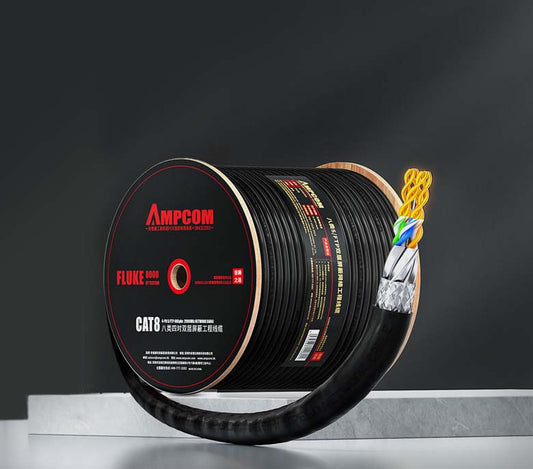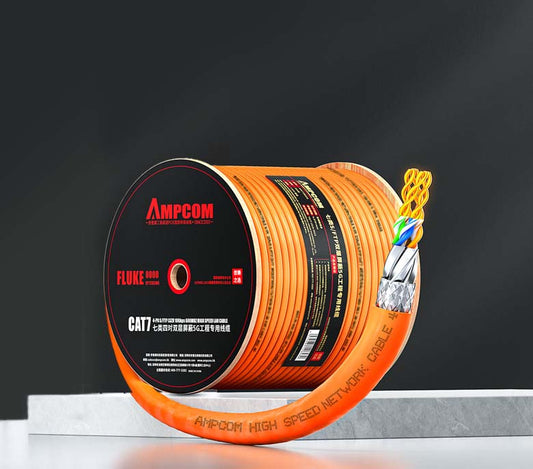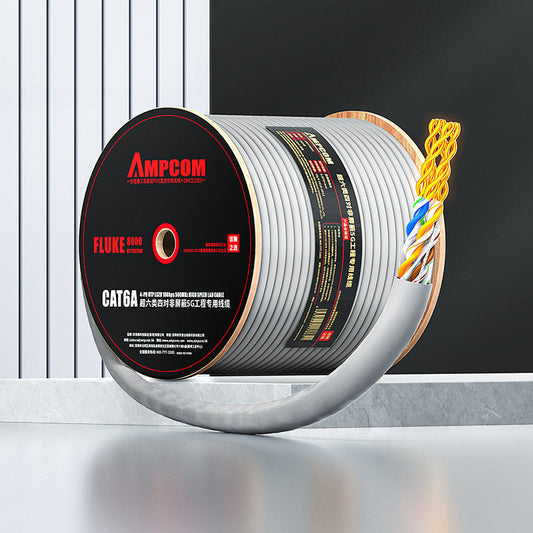Cat6 10G: What Installation Variables Beyond Distance Affect Performance?
While Cat6 is commonly used for gigabit networks, many also attempt to use it for 10G networks. However, in addition to the distance limitations, many installation variables can impact the performance of Cat6 10G networks. This post will explore these factors and provide solutions to help you achieve stable 10G performance.
TL;DR
- Alien Crosstalk can cause signal degradation—use shielded cables like F/UTP or S/FTP in noisy environments.
- Respect bend radius guidelines to avoid signal loss, especially for 10G speeds.
- Proper grounding is crucial for stable 10G performance—ensure your cables and equipment are correctly grounded.
- Use quality connectors and avoid long untwisted pairs to minimize return loss.
1. Installation Variables Beyond Distance: What Affects Cat6 10G Performance?
Although Cat6 can handle 10G in some cases, many installation factors can influence performance. These include:
- Alien Crosstalk - This external interference can drastically affect signal integrity.
- Bend Radius - Exceeding the recommended bend radius can cause signal loss, especially with high-speed 10G networks.
- Grounding - Improper grounding can lead to poor performance and signal instability.
- Shielding - Shielded cables, especially in environments with a lot of electromagnetic interference (EMI), are critical for maintaining signal integrity.
- Cable Management - Tight bundling can lead to Alien Crosstalk and signal degradation, so cables need to be properly managed.
Snow/sparkles → Marginal return loss → Plug termination, cord too short, bend radius
Random blackouts → Noise ingress/alien XT → Shielding choice, bonding path, bundling
EDID/HDCP handshakes → Channel headroom → Patch cords added at turnover, couplers
2. Shielding & Grounding: Stable 10G Performance in Noisy Environments
In environments with high EMI—such as dense AV racks, hospitals, and factories—shielded cables and proper grounding ensure stable 10G performance.
- Use F/UTP or S/FTP Cat6a in noisy sites.
- Bond panels and racks; remove paint at contact points.
- Keep power cabling at a distance; cross at right angles.
- Leave shields floating (no "mystery grounds").
- Stack long shielded cords in tight bundles.
- Assume shielding fixes poor terminations.
Related posts: Shielded vs Unshielded, STP grounding best practices, EMI/RFI solutions.
3. Connectors & Termination Quality
- RJ45 plating & contact quality: Thin plating drifts in reliability; pick reputable plugs and jacks.
- Maintain twist and geometry: Avoid long untwist and conductor stubs that worsen return loss.
- Pass-through caution: Some designs introduce impedance discontinuities; use vendor-approved components for 10G.
- 28AWG compatibility: If you must use slim cords, match plugs specifically designed for 28AWG.
4. Installation Variables You Can Control
- Bend radius & strain relief: Respect minimum radius behind dense panels; use guides instead of tight zip-ties.
- Separation from EMI: Avoid parallel runs near PSUs, dimmers, and VFDs; maintain spacing in trays.
- Bundle management: Minimize large, tight bundles to limit alien crosstalk and heat buildup.
More on density & alien XT: Alien crosstalk mitigation, Data-center cabling pitfalls.
5. Quick BOM Examples (Good → Better → Best)
| Tier | Patch Cord | Shielding | Panel/Rack | Use When |
|---|---|---|---|---|
| Good | Cat6a 24AWG stranded | U/UTP | Standard panel, good cable management | Low EMI, short runs, moderate density |
| Better | Cat6a 24AWG stranded | F/UTP | Bonded panel, bonded rack | Light EMI (AV racks, office risers) |
| Best | Cat6a 24AWG stranded | S/FTP | Full bonding kit & verified continuity | High EMI (industrial, medical imaging) |
FAQ
Can Cat6 handle 4K60 over HDBaseT?
It may in very short, low-noise channels, but Cat6a provides far more headroom for return and insertion loss. For stable 4K60, choose Cat6a.
Do I always need shielded cords?
No. In high-EMI sites (dense AV, hospitals, factories) shielded cords plus correct bonding significantly improve stability.
Why do some pass-through plugs cause issues?
Some designs can introduce impedance discontinuities at the plug tip on high-frequency links. Use quality, non pass-through RJ45s or vendor-approved parts.
Are 28AWG slim cords safe for HDBaseT?
Use with caution. Their higher loss and lower thermal headroom reduce margin, especially on longer or bundled runs. Prefer 24AWG stranded Cat6a for 4K60.
How short is “too short” for a patch cord?
Very short cords can degrade return loss in some channels. Follow length policies and test the full channel before handover.
What report should I keep?
Save the full channel report (NEXT/PSNEXT, RL, IL, length). It documents acceptance and speeds future troubleshooting.



